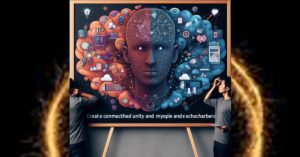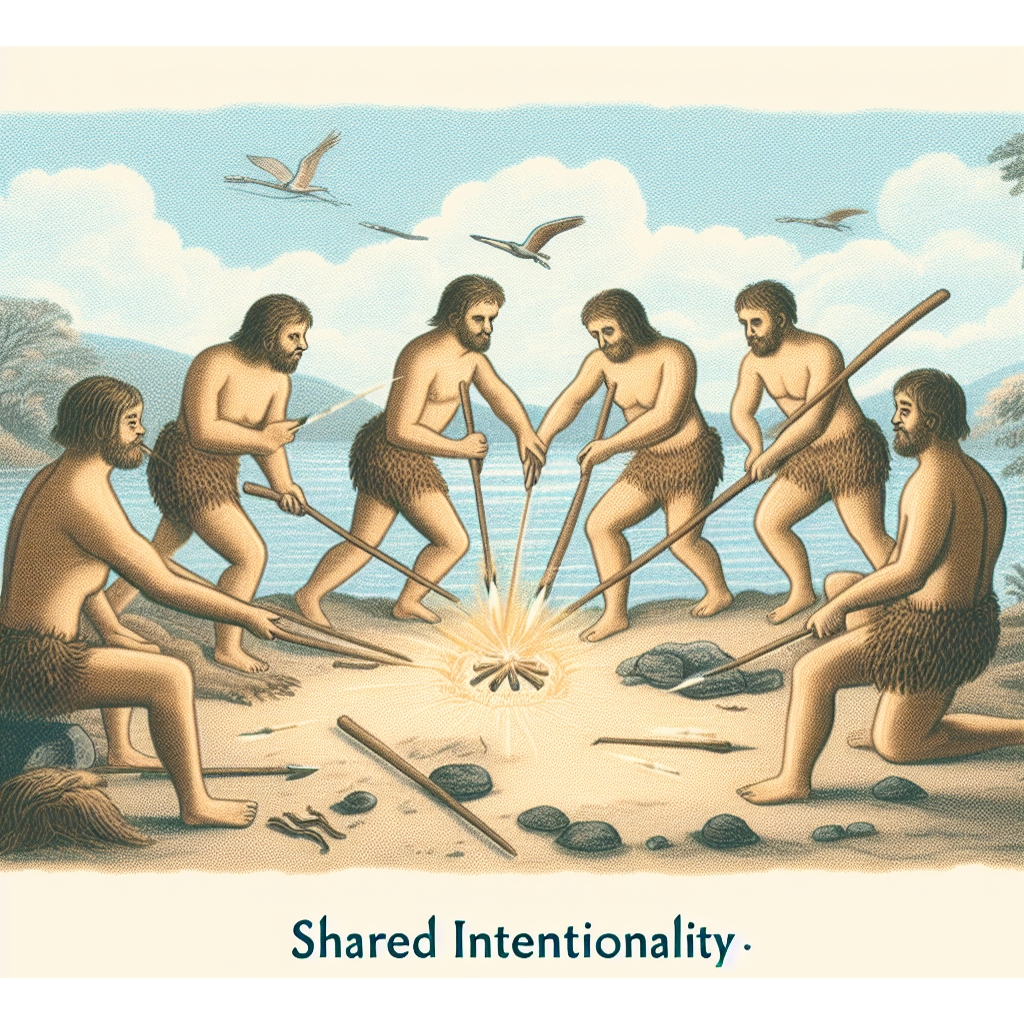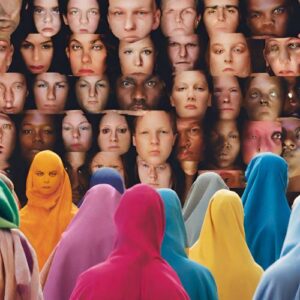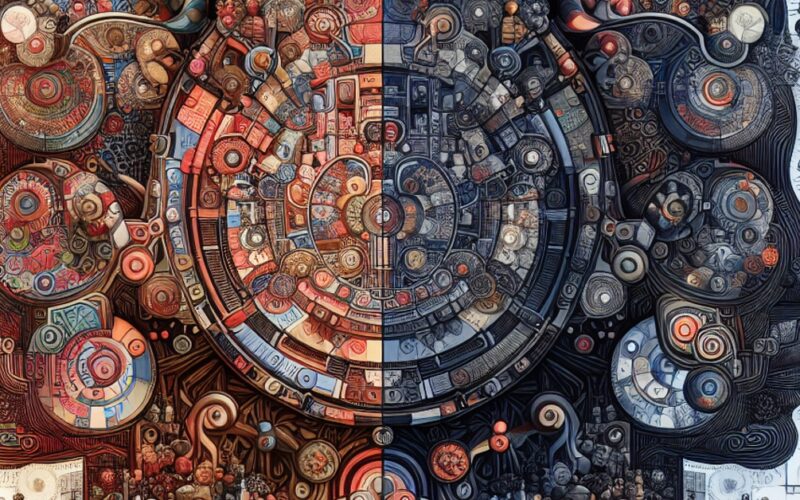This essay delves into the assertion that sectarianism or tribalism not only unites but also obscures our vision. It postulates that human nature is a product of dual-level natural selection, where competition occurs both among individuals within a group and among the groups themselves. We, as descendants of primates, inherited a nature marked by this double-edged competition. This legacy bequeaths us a less flattering aspect of our character, one where selfishness and hypocrisy intertwine, skillfully masquerading as virtue, even to the point of self-deception.
Indeed, our nature is tainted with a certain self-righteous hypocrisy. Our concerns often lean more towards the appearance of goodness rather than its genuine embodiment. Deception, ethical shortcuts, and moral manipulations are not uncommon in our quest for self-justification and reputation management, especially when we believe we can escape scrutiny.
However, this portrayal captures only a fragment of our complex nature. While selfish motives often underpin our moral, political, and religious actions, presenting them as mere facades for self-interest, there is more to the story.
Our nature is also inherently ‘groupish’. We possess a plethora of cognitive mechanisms adept at advancing our group’s interests in the face of rival groups. We may not be paragons of virtue, but we often excel as team players. This raises a question: Does our group-oriented nature stem from the historical triumph of group-minded individuals over their less communal counterparts? If so, this would simply reflect the conventional dynamics of natural selection at an individual level.
Charles Darwin recognized the fundamental principles of what is now termed ‘multilevel selection.’ Life exists as a nested hierarchy, encompassing everything from genes to organisms to societies. Competition can emerge at any tier of this hierarchical structure. For the purposes of this essay, we focus on two specific levels: the individual and the group. In intergroup conflicts, cohesive and competitive groups generally prevail. Yet, paradoxically, within these successful groups, it is the selfish individuals – the free riders – who often gain the most. They reap the collective benefits while contributing minimally. In the context of warfare, the bravest armies may emerge victorious, but within these armies, the few who shirk from danger are most likely to survive, enjoy the spoils, return home, and propagate their lineage.

Multilevel selection theory articulates a method for gauging the intensity of selective pressures at various hierarchical levels, essentially measuring the degree to which the crucible of existence favors certain genetic traits. A gene promoting altruistic self-sacrifice, for instance, might be advantageous at the group level, aiding in the collective triumph, yet it faces staunch opposition from individual-level selection.
With the emergence of human groups capable of unifying and competing against others, group-level selection began to exert its influence, conferring an edge to the most cohesive groups over collectives comprised of self-centered individuals. But what catalyzed the development of these communal abilities in early humans? Darwin suggested a sequence of likely evolutionary stages leading to the formation of groups characterized by cooperative team players.

The initial phase involved the development of “social instincts,” as in humanity’s nascent stage, solitary individuals were more susceptible to predation than their socially inclined kin. The second phase was “reciprocity” – the notion that those who assist others are more likely to receive aid in return. The third, and arguably most crucial, phase was humanity’s deep-seated “concern with the approbation and censure of their peers.” Echoing Glaucon’s perspective, Darwin observed an obsession with reputation among people. The fourth stage entailed the capacity to venerate duties and principles, which Darwin identified as an element of our religious nature.
These stages encapsulate our evolutionary journey from primitive primates to modern humans, where the lure of free-riding has diminished. Most groups, akin to bona fide armies, employ numerous strategies to curb selfish tendencies. Whenever a group devises effective methods to suppress self-interest, it alters the dynamics in a multilevel analysis: the significance of individual-level selection diminishes, while group-level selection gains ascendancy.
In a statement of remarkable brevity and foresight, Darwin succinctly encapsulated the evolutionary genesis of morality, a seminal contribution to the field of moral psychology. “Ultimately our moral sense or conscience becomes a highly complex sentiment – originating in the social instincts, largely guided by the approbation of our fellow-men, ruled by reason, self-interest, and in later times by deep religious feelings, and confirmed by instructions and habits.”
For nearly a century, Darwin’s solution to the conundrum of the free rider held prominence, embedding group selection as a pivotal concept in evolutionary theory. However, this viewpoint was somewhat naïve, as altruistic individuals, by virtue of their selflessness, would produce fewer offspring compared to the progeny of self-serving free riders, ultimately leading to their dwindling presence in the population.
My objective is to inform that morality is the cornerstone for comprehending the essence of humanity. In the dawn of human existence, our inherent group-oriented nature enabled us to transcend individualistic pursuits. This groupish trait, despite its propensity to incite tribalism and conflict, is a fundamental catalyst that propelled civilizations to flourish across the globe, achieving relative peace in mere millennia. This same quality catapulted humans from relative obscurity at the commencement of the Holocene (approximately twelve thousand years ago) to a position of global dominance, relegating other mammals to the periphery, much like colonial insects outcompeting their counterparts.
Chimpanzees, arguably the second most intelligent species, demonstrate remarkable capabilities: crafting tools, mastering sign language, discerning the intentions of their peers, and engaging in deception for personal gain. Yet, it remains unfathomable to witness two chimpanzees collaboratively transporting a log. Despite their individual brilliance, they lack the capacity for collective action. Why this shortfall? Research reveals that even human toddlers surpass chimps in tasks requiring teamwork.

The cognitive trajectory of humans diverged from that of other primates when our ancestors, at some point in the last million years, developed “shared intentionality.” This evolution entailed the ability to jointly conceptualize and pursue tasks, enhancing their proficiency in hunting, gathering, child-rearing, and even raiding neighboring communities. As early humans began to align their intentions, their collective efficacy surged. When a group adopted a unified understanding of norms and practices, any deviation from these shared expectations triggered a communal sense of disapproval. It was in this crucible that the inaugural moral matrix emerged.
Following hundreds of thousands of years of evolutionary refinement in cooperation and sharing among hunter-gatherers, groups that excelled in collaboration began to expand, spurred by threats from rival collectives. Triumph in these conflicts often favored the most unified groups. Consequently, natural selection increasingly promoted “group-mindedness” – the propensity to assimilate and adhere to social norms, experience and express emotions tied to the group, and ultimately, to establish and comply with social institutions, including religious ones.Humans then embarked on the development of cumulative culture, teamwork, and specialized roles. This pivotal transition not only altered the trajectory of human evolution but also fundamentally transformed the nature of the evolutionary process itself. From this juncture, humans existed in an environment predominantly of their own creation, leading to a dual evolutionary dynamic encompassing both biological and cultural elements. Societies began to forge new customs, norms, and institutions, with a growing inclination to signify group affiliation and favor cooperation within their group.
Prior to this evolution, human nature was largely sculpted by natural selection at the individual level. Subsequently, humans evolved a dualistic nature, embodying both the self-interest characteristic of primates and a yearning to be part of something transcending the self. It is as though there exists a cognitive switch, activating either individualistic or communal instincts, depending on which is more advantageous under given circumstances.

Oxytocin, in this context, enhances affection towards one’s in-group, fostering a kind of parochial altruism. We transform into conditional hive creatures, more likely to empathize and mirror those who align with our moral matrix, and less so with those who diverge from it. Shared intentionality emerges as a formidable force. Engaging individuals in collective activities, such as singing, marching in unison, or rhythmically tapping together, fosters trust and a willingness to assist one another. These activities create a sense of similarity and unity among participants, reinforcing their communal bonds.
We exist as the culmination of multilevel selection, encompassing both group selection and a form of parochial altruism that underpins our exceptional capacity for teamwork. Our inherent need for and affinity towards groups is fundamental, and it is within these collectives that we cultivate our virtues, despite the inevitable exclusion of non-members. The dissolution of group structures equates to the erosion of moral capital. Edmund Burke, in 1790, eloquently articulated this sentiment: “To be attached to the subdivision, to love the little platoon we belong to in society, is the first principle (the germ, as it were) of public affections. It is the initial link in a chain leading to a love for our country and humanity.”
This phenomenon gives rise to two distinct forms of social capital. Bonding capital refers to the trust and unity found within a group. Bridging capital, conversely, pertains to trust and understanding across different groups, bridging people with divergent values and identities.
Ideological adoption is not a random process nor a mere absorption of surrounding ideas. Once individuals are born into or join a group, they become entangled in its moral and ideological matrix. They perceive affirmations of their overarching narrative everywhere, and it becomes nearly impossible to persuade them of their fallacies if the argument is presented from outside their established matrix.

Sectarianism, or an intense group loyalty, simultaneously unites and obscures our vision. It veils us in ideological or religious allegiances, inciting conflicts as if the survival of the world hinged on our faction prevailing in every debate. It obscures the possibility that our adversaries, too, may harbor virtuous individuals and potentially valuable insights. This phenomenon is not exclusive to our opponents; we are all drawn into these tribal moral communities. We rally around sacrosanct values, constructing retrospective justifications for our staunch convictions while dismissing the opposition as misguided. We perceive the other side as oblivious to truth, reason, and sensibility, yet in reality, everyone becomes myopic when defending their sacred tenets.
Beware of anyone who proclaims a singular, universal truth applicable to all peoples, times, and places. Anyone advocating a one-size-fits-all truth or moral framework across diverse cultures and eras is, in essence, a fundamentalist of some variety. To broaden your perspective, begin by opening your heart. Engage amicably with those from the ‘other’ side. Such interactions pave the way for more receptive listening and might even illuminate controversial issues in a novel light.
Epilogue: Navigating the Dichotomy of Human Groupishness
In the complex scheme of human existence, groupishness or sectarianism emerges as both a cloak of unity and a veil of obscurity. This essay has navigated the complex landscape of our evolutionary heritage, illuminating how our deep-seated group-oriented instincts have shaped the contours of our moral and social consciousness. We are, by nature, creatures of community, driven by an innate groupishness that has been instrumental in the ascent of civilizations and the cultivation of empathy and solidarity. Our primal urge to belong and contribute to a collective has birthed the very foundations of our moral compass, guiding us towards communal harmony and cooperative endeavor.
Yet, this same groupishness casts a shadow over our capacity for reason and openness to differing perspectives. As we fervently align with our ideological and religious factions, we often become enmeshed in a tribalistic fervor, blind to the virtues and insights of those outside our inner circles. This myopic allegiance to our ‘sacred’ values and narratives fosters division and impedes our ability to engage with the world through a lens of nuanced understanding and compassion.
We are all born cradled within the embrace of this groupish nature, an inherent part of our human condition. Acknowledging this is not an admission of defeat but a recognition of the complex duality that defines us. Our challenge, therefore, lies not in the renunciation of our groupish instincts but in transcending their limitations. It calls for an expansion of our moral horizons, a journey beyond the confines of our immediate communities to embrace a broader, more inclusive view of humanity.
In embracing this challenge, we must strive to balance our innate group loyalty with a cultivated openness to diverse perspectives. As we navigate the intricate interplay of unity and division, empathy and bias, we are beckoned to foster connections that bridge the divides, to seek understanding in the face of disagreement, and to cherish the rich mosaic of human experience. This journey of growth and expansion is not merely a path to individual enlightenment but a collective endeavor towards a more harmonious and interconnected world.







